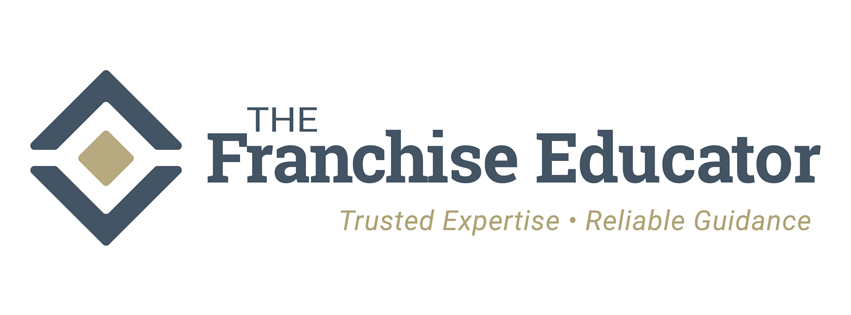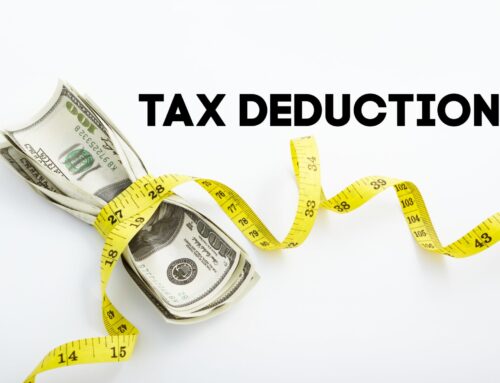2021 Franchise Trends and Growth Expectations
2021 is poised to create rarely-before-seen opportunities for franchises. Research from the recently released 2021 Economic Outlook for Franchising shows franchising can play an important role in expanding the economy back to pre-pandemic levels through revenue generation and job creation. Results from the Small Business Trends Association’s Small Business Trends (SBT) franchise survey show that franchise owners are ready, eager, and excited to capitalize on this opportunity.
Table of Contents
-
- The Future of Franchises
- 1.1. Franchising Economic Outlook
- Franchise Financing and the Payment Protection Program (PPP)
- 2.1. Government Financial Relief and Franchising
- Top Franchise Industries in 2021 and Beyond
- 3.1. Commercial and Residential Services Franchises
- 3.2. Retail Food, Products, and Services Franchises
- 3.3. Restaurant Franchises
- Franchise Owner Optimism and Growth
- Franchising in 2021
- The Future of Franchises
The Future of Franchises
With an early control of the COVID-19 pandemic, as we’ve seen with the $1.9 trillion stimulus bill, FRANdata expects the franchise industry will recover to nearly 2019 levels by most metrics, including business growth. The International Franchise Association’s Economic Outlook for Franchising report projects over 26,000 new franchises will open in 2021, employing approximately 8.3 million workers and adding almost 800,000 new jobs to the American economy. The report also projects franchise output to grow by 16.5 percent, contributing a total of $780 billion to the GDP.
Franchising Economic Outlook
Due to the pandemic, Americans have the most personal savings since the mid-1970s. As COVID-19 becomes less of a threat and businesses begin to open again, pent-up consumer demand and the ability to spend those savings has the potential to drive GDP growth by over six percent per quarter in the second half of 2021. FRANdata predicts that if pandemic control continues to progress, this economic recovery will cause the US economy to go into 2022 in a stronger position than it was in at the end of 2019 – surpassing pre-pandemic levels.
Historically, franchising expands faster than the overall US GDP. For the past four recession cycles, franchising has served as one of the leading business and job generators. Franchising’s unique model fundamentally allows for faster openings, quicker hiring, and more stable performance than independent businesses – making franchising a strong contender for aspiring small business owners who want to rapidly take advantage of economic opportunity.
Thanks to the historically proven resilience of franchising, FRANdata anticipates franchised businesses to grow steadily throughout 2021. Like the GDP, franchising contracted in 2020 by an estimated 2.6 percent. The franchise industry is projected to recover in 2021, with the total of franchise locations growing at a rate of 3.5 percent. As seen in past recessions, franchising is expected to benefit from significant sales growth, new unit development, and new job creation. The 2021 Economic Outlook for Franchising projects a net gain of 26,000 new franchise units in 2021. This would bring the total number of franchise locations to 780,188 – 6,000+ franchises more than 2019 pre-pandemic levels.
Franchise Financing and the Payment Protection Program (PPP)
Even before the COVID-19 pandemic kicked off, the US Federal Reserve had been lowering interest rates. As the pandemic’s effects increased, the Reserve continued to cut interest rates. At the time of this writing, interest rates are at an all-time low. Most experts believe these rates will stay low for the foreseeable future.
These historically low-interest rates create an exceptional opportunity for franchising, paving the way for aspiring small business owners to achieve affordable funding. Thanks to the speed of a proven business model and more accessible funding, franchising is a strong choice for new business owners to get to work – especially those who may have lost their jobs due to the pandemic, thanks to extra governmental benefits.
The SBT survey showed that Rollovers for Business Start-ups (ROBS, also known as 401(k) Business Financing) was the most popular choice for franchise financing among respondents*. Cash was the second most popular, followed by an SBA loan. Multiple stimulus packages have afforded even more funds to the SBA to help with the financing of small businesses and franchises.
* Please note respondents include Guidant Financial clients. Guidant Financial is a ROBS provider.
Government Financial Relief and Franchising
The ongoing Paycheck Protection Program (PPP) has been a huge help in aiding franchises in staying open and recovering from the pandemic. The SBT survey showed that 70 percent of franchise owners received either an Economic Injury Disaster Loan (EIDL) or PPP loan. FRANdata estimates that PPP loans saved over 36,000 businesses from closing – rescuing nearly half a million jobs.
Almost half of all US franchises are one- or two-unit operations, which includes a substantial number of minority-owners and businesses operating in disadvantaged communities. These franchises were hit hardest by the pandemic. Lower-skilled workers were also disproportionately affected by lay-offs. However, thanks to aid from the PPP, other stimulus benefits, and the projected growth of sectors that employ many of the disproportionately and hardest affected, these important groups are expected to be included with the franchise growth of 2021 and beyond. FRANdata estimates that franchises will employ 8.3 million workers, adding nearly 800,000 new jobs to the US economy.
Top Franchise Industries in 2021 and Beyond
FRANdata studied eight lines of franchised business industries and expects all eight industries to sustain growth throughout 2021. Their report anticipates the commercial and residential sector to continue to lead the growth, expanding by a rate of 3.4 percent. The next leading industry is projected to be the food and restaurant sector, thanks to Quick Service Restaurants (QSR) and consumers eager to return to pre-pandemic behaviors.
Through 2020, the commercial and residential services sector has had significant growth at a rate of 8.8 percent, helping to offset some of the declines in other franchising industries. Real estate, retail, and business services also grew at rates of 1.6 percent, 1.2 percent, and 0.8 percent, respectively.
Commercial and Residential Services Franchises
The commercial and residential services sector of has had the greatest growth during COVID-19 and FRANdata expects it to sustain that growth into 2021 – primarily through residential construction. In the fourth quarter of 2020, the National Association of Home Builders’ (NABH) Remodeling Market Index was at 79, showing very strong demand for home improvement, demonstrating consumer’s continued investment into the housing marketing.
Throughout the pandemic, both FRANdata and Guidant Financial have seen an increase in the demand and need for home cleaning, sanitation, and disinfecting services – which has strongly improved franchises specializing in these services.
Franchises in the commercial and residential services sector are expected to continue to grow at a rate of 3.4 percent in 2021 – expanding to approximately 76,000 units. FRANdata’s report anticipates these franchises to grow their output to $53.3 billion in 2021, a growth of eight percent.
Retail Food, Products, and Services Franchises
The retail food, products, and services sector grew through 2020 by a rate of 1.2 percent, continuing its place as the second-largest franchising industry. Franchises in this industry are expected to increase in 2021 by a rate of 3.3 percent. This will increase units to 162,669, almost triple of 2020’s projected growth rate. This success is driven by the consumer shift of spending in grocery stories from restaurants, which was a trend FRANdata recognized even before the COVID pandemic – stemming from consumer nutrition concerns.
Automotive, health and personal care, mass merchant, home improvement, and furnishings retail stores also benefited from consumer spending changes during the pandemic. Since June 2020, aggregate retail and food services showed a V-shaped recovery with a year-over-year increase each month. By December of 2020, retail sales were 2.9 percent higher than pre-COVID levels seen in 2019.
FRANdata expects to see continued growth in these sectors after the winter of 2021 and into the mid-and late-year, especially as consumers begin to spend money on travel and vacations thanks to stimulus funds and a broad COVID-19 vaccine roll-out.
Restaurant Franchises
It’s no secret that the pandemic severely impacted restaurants of all shapes and sizes. However, industry experts suspect 2021 might be a huge year for franchised restaurants. Franchise concepts that have survived throughout the pandemic have renewed growth opportunities due to the availability of prime locations, reduced investments, and greater financial flexibility because of the surplus of commercial real estate and extremely low interest rates.
Quick Service Restaurants (QSR) are expected to lead growth, as the model works better than full-service restaurants in a COVID environment. FRANdata estimates QSR establishments will grow at a rate of 4.1 percent in 2021, up to 191,146 businesses. They also expect to see sustained improvement for sales output by 10 percent, up to $256 billion.
As the economy recovers and states reopen, FRANdata also estimates table and full-service restaurants to rebound, growing by 6.2 percent, up to 30,010 businesses. The sales output is forecast to grow by 31.9 percent, totaling $66.3 billion.
Franchise Owner Optimism and Growth
Though 2020 was a historically challenging year for many franchises and small businesses, the sentiment among small business owners is optimistic, demonstrating the resilience and determination of these entrepreneurs. Guidant’s Small Business Trends report, based on a survey as part of the Small Business Trends Alliance, saw that the majority of surveyed franchise owners are “somewhat happy” on a five-point scale of “very unhappy” at one and “very happy” at five. The average respondent rated their happiness as a small business owner as 3.76 on a one to five scale.
Surveys from both Capital One and Vistage demonstrated that small business owners have a positive outlook on the future. One survey showed that 83 percent of small and medium-sized business owners expect that their business will perform better in 2021 than in 2020. The Small Business Trends survey saw that, on average, franchise owners are somewhat confident in the state of small business post-COVID, with an average of 3.22 on a one to five scale of “very unconfident” to “very confident.”
Perhaps most tellingly from the Small Business Trends survey, 74 percent of franchise owners expect their business to survive the COVID-19 pandemic, while 22 percent are unsure, and only four percent expect to fail. This survey was performed in late 2020, ahead of multiple stimulus packages and the reopening of the Paycheck Protection Program, which afford even more options for financial assistance to franchise owners.
This optimism extends into future plans for franchises in 2021 and beyond. From the SBT survey, the majority of franchise owners plan to grow their business in 2021, while less than a quarter are only focused on sustaining. Nearly 57 percent of SBT surveyed franchise owners plan to hire more in 2021, while other surveys show that number as high as 93 percent. A further 40 percent of franchise owners who responded to the SBT survey plan to expand or remodel their business, while over 60 percent are ready to invest in digital marketing. These results all demonstrate the confidence and eagerness of franchise owners to not just get back to business in the coming year but to go above and beyond.
Franchising in 2021
With a strong vaccine roll-out and government financial add, the future of franchising in 2021 and beyond looks bright. New innovations, proven business models, and franchise owner resilience all contribute to this positive outlook, as well as economic forecasts and consumer behavior, especially as more people return to work, pursue the vacations they’d put off, and feel confident spending their savings.
With newly available financial aid, personal savings at their highest since the 70s, and historically low-interest rates, 2021 might be the best year in recent memory to start a new franchise or buy an existing location. Interested in learning more? Guidant is here to help. Schedule time with us today or complete our five-minute pre-qualification tool to learn how you can benefit from this time of expansive opportunity.
If you wish to learn about your pre-qualification through Guidant, click on the Guidant logo for the link:

To schedule a Casual Call with The Franchise Educator, click on the logo:

Resources:





